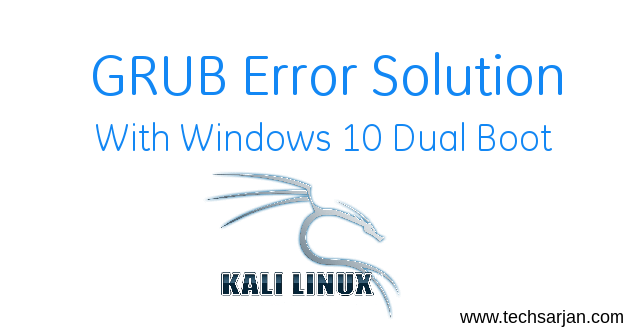
This file will direct grub to boot your OS. If you receive an error message from the setup command, try running it again, with the same parameters.ġ0) create a file in /mnt/sdc1/boot/grub named menu.lst (that is a letter l in.
#KALI INSTALL GRUB ON USB INSTALL#
This will overwrite the MBR of this device, so again, it is highly important that you know which device you are dealing with, or you could mess up your ability to boot your computer! Note-if you are looking to install grub to the bootsector of a partition (rather than to the MBR), enter, for example, 'setup (hd1,1) to install to the second partition of the second drive. On my first install, I didn't include this, and grub would hang on boot-up, because it was looking for the files on another device.Īgain, replace hd1 with the device to which you want to install grub. This tells grub to look in this partition (your target partition) for the files necessary to boot. The second drive (hd 1,0) was the USB drive running porteus, and the third drive (hd2,0) was the target drive.īut replace hd1,0 with the device/partition to which you want to install grub.
#KALI INSTALL GRUB ON USB WINDOWS#
In my case, I knew that hd 0,0 was my hard drive, with windows installed (it was not shown, because it does not contain the /boot/grub/stage1 file). Note that Grub starts counting from "0" (not "1") for both drives and partitions. It is very important that you know which of these drives is the target drive. This searches all partitions on your system, and will return a list of each instance where this file was found along the path /boot/grub. This will open a grub shell.ħ) Enter the following into the grub shell: In my case, sdb1 was my active Porteus USB drive (which was already mounted), and sdc1 was the target drive.Ĥ) Create a new directory to hold grub on the target drive:ĥ) Copy all of the files from /usr/lib/grub/i386-pc to /mnt/sdc1/boot/grub.Ħ) In your terminal, type ‘grub’ and hit enter. Replace sdc1 with whatever partition you are installing to.

This will install all of the necessary grub files to the system you are running, but it will not overwrite the MBR of the active drive (it will continue to boot as usual).ģ) Insert the second USB drive, and mount it. txz package you downloaded, and select “install”. Steps 1 and 2 are not necessary if you are installing from a linux system that already uses Grub, as these files should already be on your system.Ģ) Right click on the. I used 2 USB drives to accomplish this (all commands were used on the first drive, running Porteus, to install grub on the second drive), but this could also be accomplished from a linux OS running on a hard drive. I found this thread useful, and based my process on the instructions provided there:

Note: this HOWTO relates to Grub (legacy), not Grub2 or Grub4dos.


 0 kommentar(er)
0 kommentar(er)
